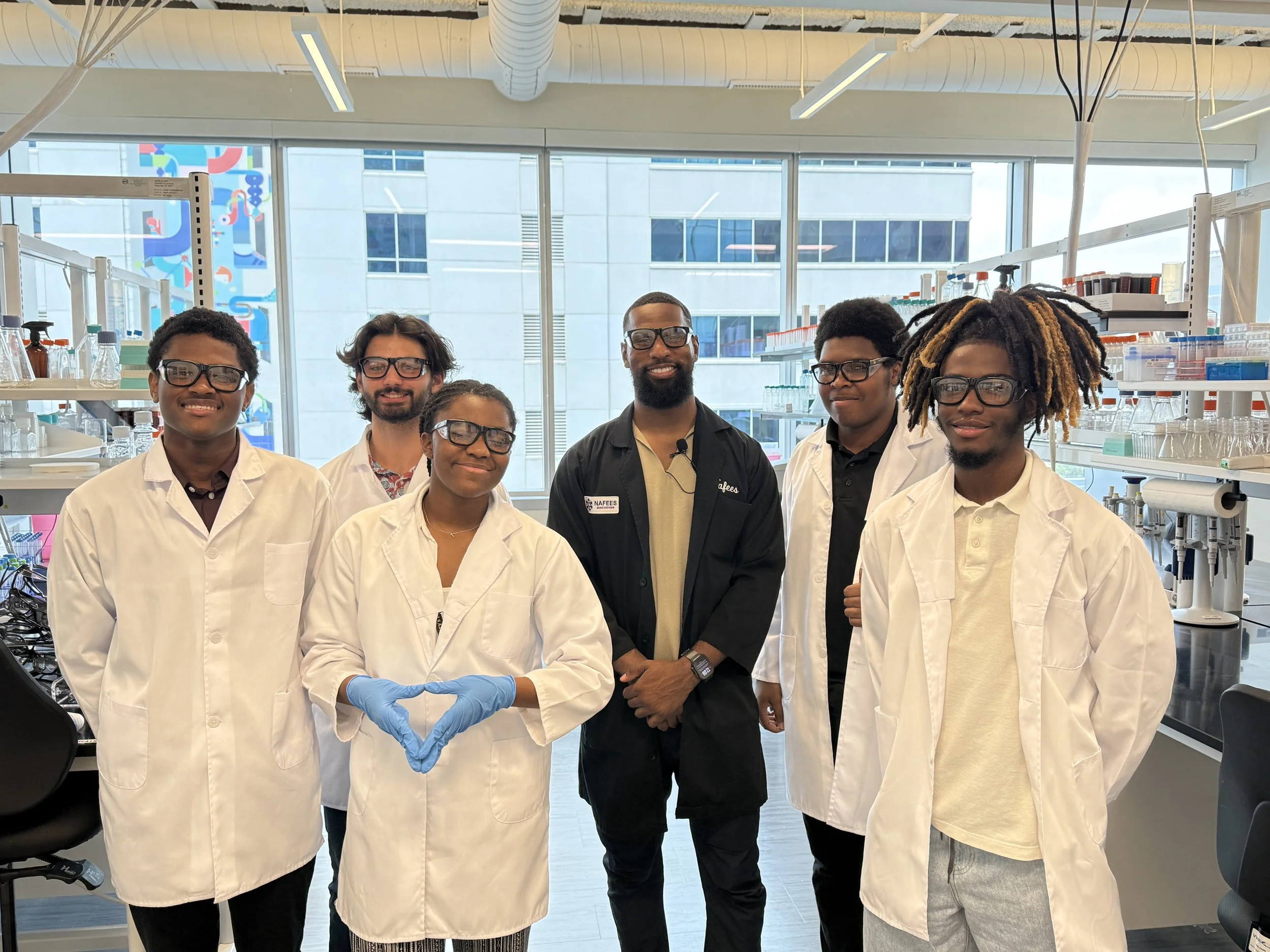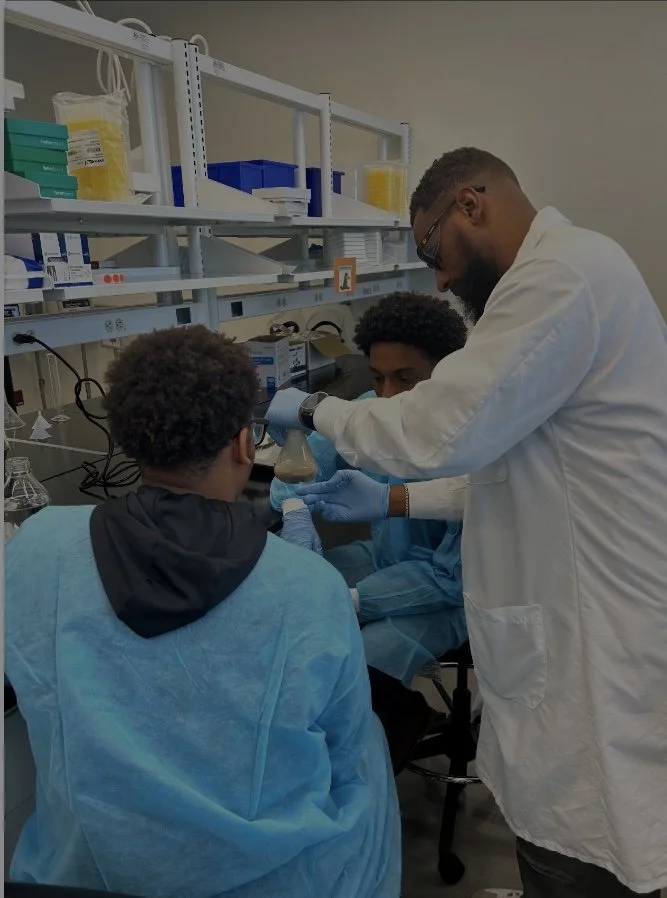STEM Bioprocessing Curriculum
Hands-on, bioprocessing-focused STEM curriculum written by real scientists, made plug-and-play for real classrooms.
What if your school had a STEM curriculum that was bioprocessing-focused, hands-on, and easy to teach—even if you’re not a scientist? That’s exactly what Nafees Innovations offers. Our curriculum weaves together biology, biochemistry, chemistry, environmental science, and engineering through the lens of bioprocessing so students don’t just learn science…they experience it.
Why Schools Love Our Bioprocessing STEM Curriculum
Written by real scientists
Every unit is designed by practicing bioprocessing scientists who work with cells, bioreactors, media prep, and real-world lab workflows.Hands-on + Theory (Built the way teachers actually teach)
Each unit includes:Short, clear theory lessons
Demonstrations and mini-demos for teacher to preform in front of the class
Hands-on labs every other day (minimum)
2-day experiments that build real lab skills
A data review / summary day for reflection and analysis
Plug-and-play for busy teachers
Teachers receive:Print-ready PDFs (lesson plans, student handouts, checklists)
Interactive PDFs (clickable vocabulary, diagrams, and charts)
Clear materials lists with classroom-friendly supplies
Charts, visuals, and simple diagrams that make complex topics easy to explain
Easy assessments built in
Pre-unit quizzes to check baseline knowledge
Bi-weekly checks to see where students need support
Unit exams with answer keys and teacher notes
Teacher support included
Onboarding call or virtual walkthrough of the curriculum
Email support for implementation questions
Suggestions for how to adapt lessons for different grade levels and class lengths
Built for Elementary, Middle, and High School
Elementary School – Simple, visual experiments that connect to what they’re already learning about plants and animals, what living things need, simple mixtures, and basic observations about the world around them.
Middle School – Stronger connections between cells, reactions, and systems, supporting topics like cell structure, the body, energy flow, ecosystems, and basic chemistry (mixtures, solutions, reactions).
High School – Deeper bioprocessing workflows (growth, purification, formulation) that sit on top of biology (cells, DNA, proteins), chemistry (reactions, pH, solutions), and environmental science, while clearly linking those subjects to real biotech and bioprocessing careers
What Students Will Explore (Bioprocessing Topics)
Students learn how real products are made with cells and chemistry, while still covering the same core topics they see in science class.
Bioprocessing & Biopharmaceuticals – How cells are used to make medicines and vaccines.
(Connects to: Biology / Life Science – cells, cell structure and function.)Medicine & Human Health – Simple labs about medicine, germs, and the body.
(Connects to: Life Science / Health – human body and disease.)Biofuels & Sustainable Energy – How living things help make fuel.
(Connects to: Earth & Environmental Science – energy and resources.)Environmental Bioprocessing – Clean water, filters, and waste breakdown.
(Connects to: Earth & Environmental Science – water cycle and pollution.)Food & Fermentation Science – Yeast and food reactions students recognize.
(Connects to: Chemistry / Physical Science – chemical changes and reactions.)


